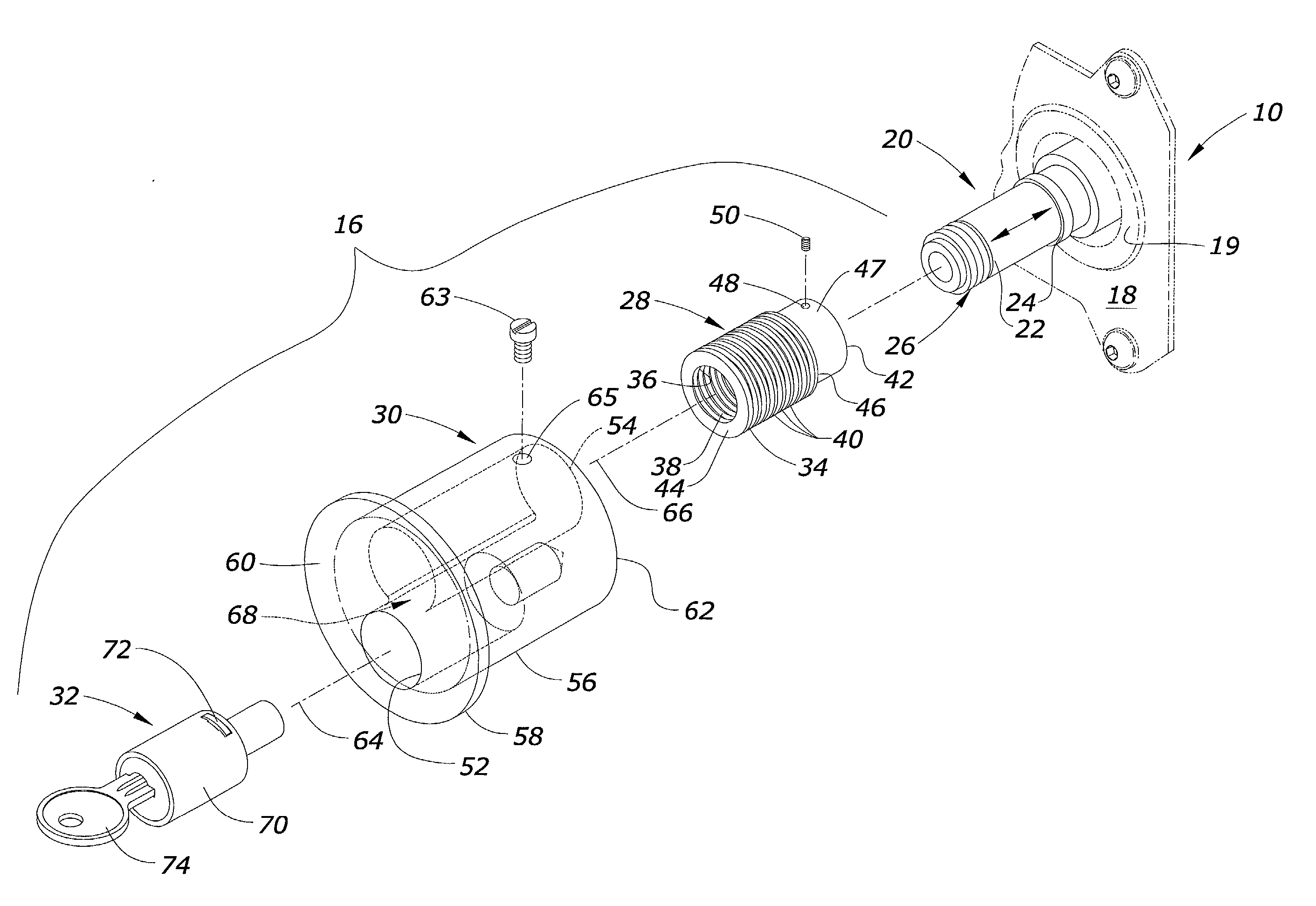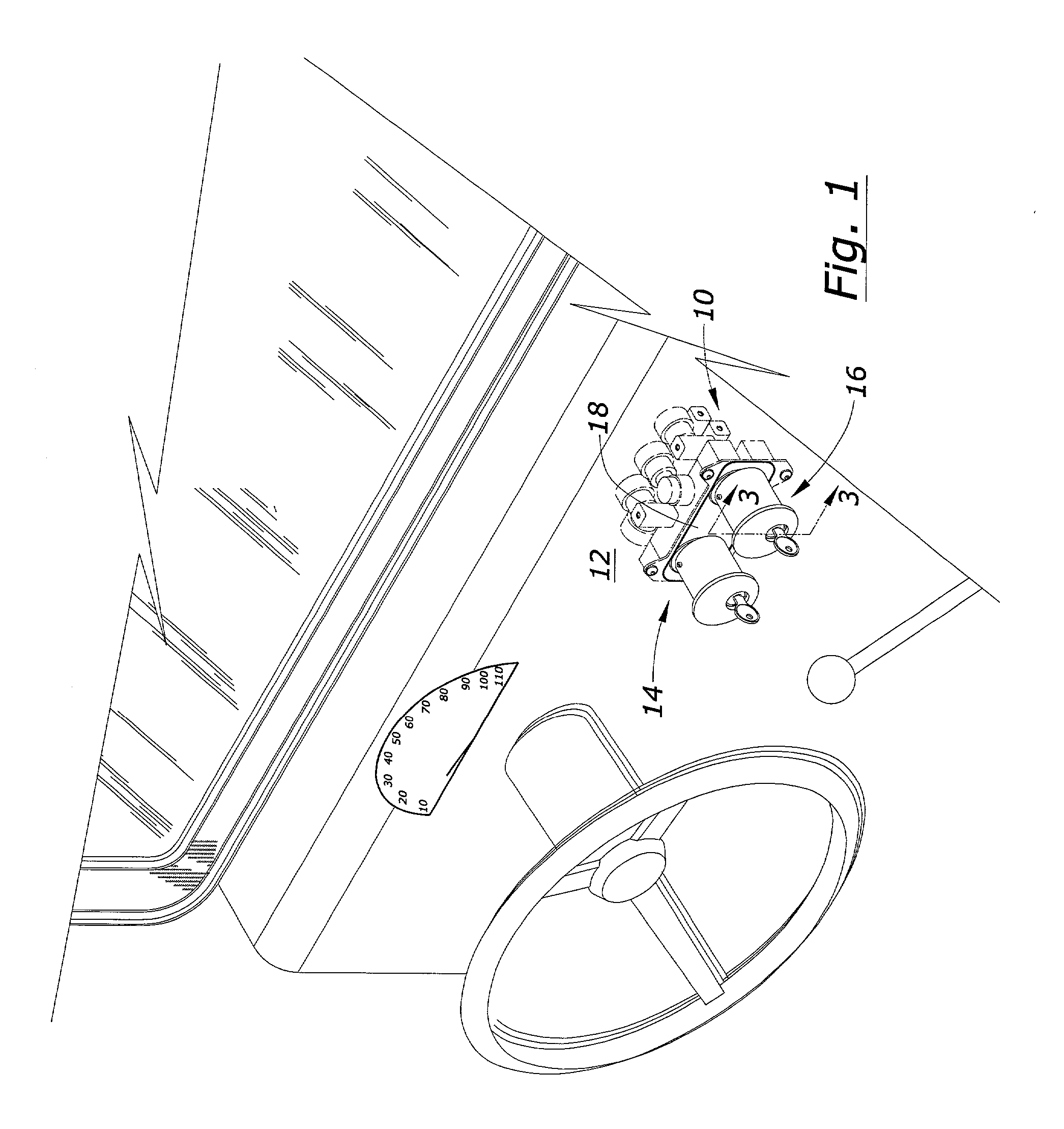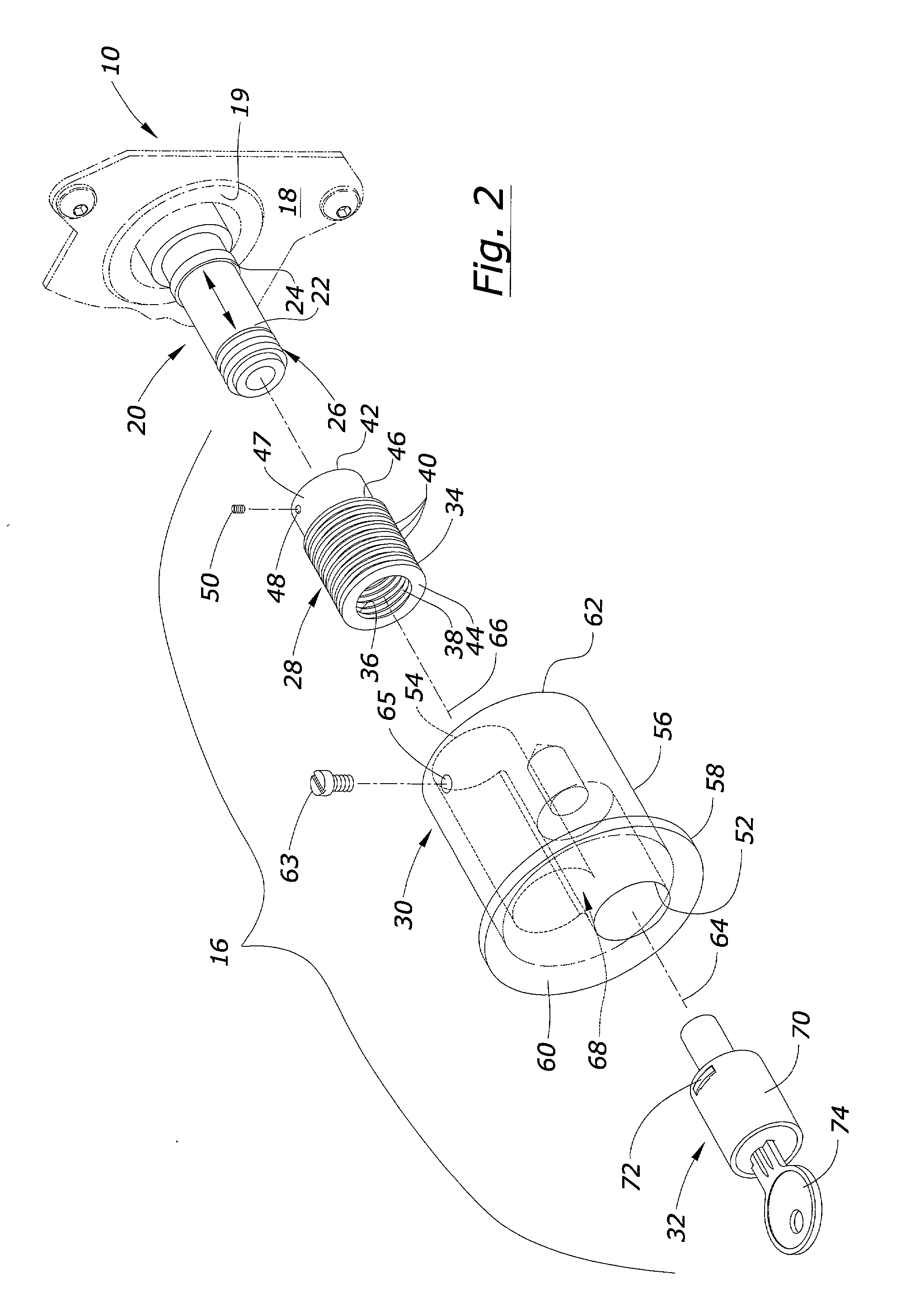Locking button for semi-tractor pneumatics
- Summary
- Abstract
- Description
- Claims
- Application Information
AI Technical Summary
Benefits of technology
Problems solved by technology
Method used
Image
Examples
Embodiment Construction
[0016] FIG. 1 illustrates the interior of a cab of a semi-tractor. As is conventional, a pneumatic control valve 10 mounts on or behind the dashboard 12. The control valve 10 controls the air brakes of the semi-tractor and the trailer pulled by the semi-tractor. The present invention provides a lockable button device that replaces the conventional buttons typically found on the air brake control valve 10. For example, when the air brake control valve 10 controls the pneumatics for the semi-tractor and a trailer attached thereto, independently operatable lockable button devices 14, 16 are mounted on the valve 10 respectively. The lockable button devices 14 and 16 are constructed and applied in a substantially identical manner, and thus only lockable button device 16 is described in further detail below.
[0017] Referring to FIG. 2, the air brake control valve 10 has a faceplate 18 and an valve stem 20 that is axially movable with respect to the faceplate 18. Although one skilled in the...
PUM
 Login to View More
Login to View More Abstract
Description
Claims
Application Information
 Login to View More
Login to View More - R&D
- Intellectual Property
- Life Sciences
- Materials
- Tech Scout
- Unparalleled Data Quality
- Higher Quality Content
- 60% Fewer Hallucinations
Browse by: Latest US Patents, China's latest patents, Technical Efficacy Thesaurus, Application Domain, Technology Topic, Popular Technical Reports.
© 2025 PatSnap. All rights reserved.Legal|Privacy policy|Modern Slavery Act Transparency Statement|Sitemap|About US| Contact US: help@patsnap.com



